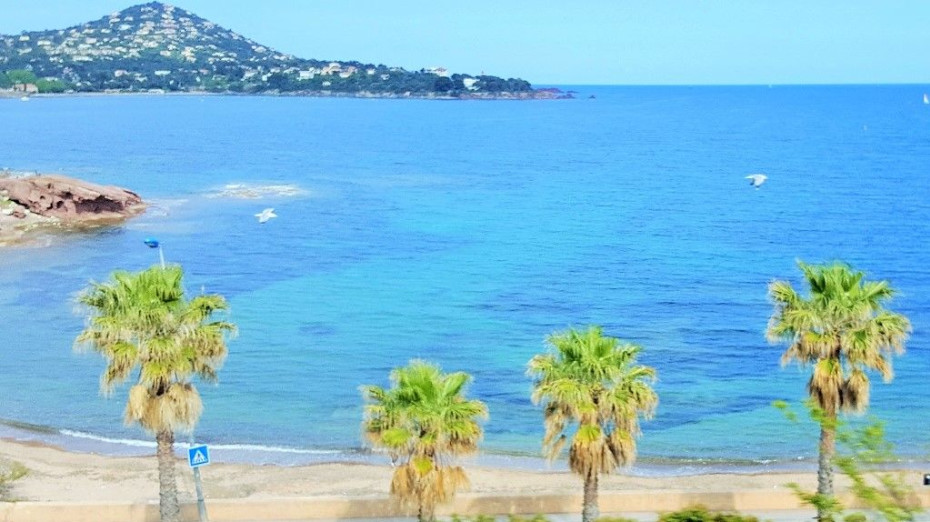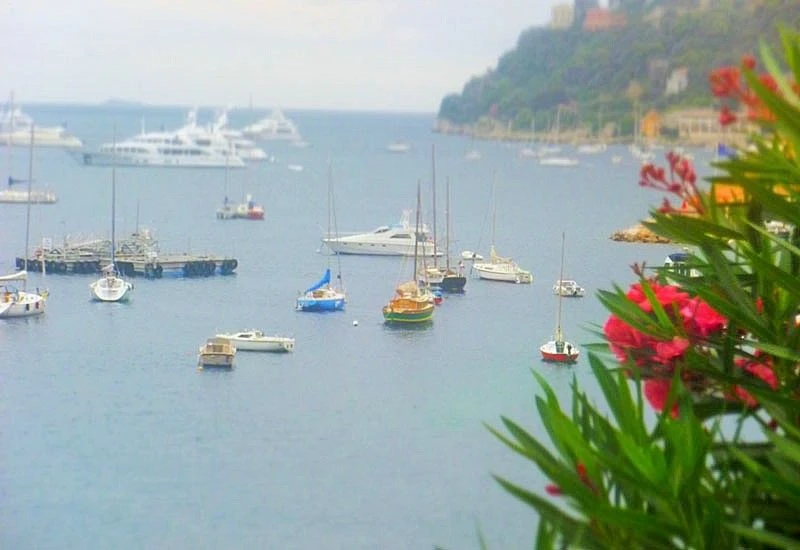Related Content
Content

Episode 16: Along the Mediterranean Coast
A day which proved the worth of having a back-up plan when taking a long rail journey with multiple connections.
Share
On the previous evening I’d left the train at the wrong station in Menton because I’d been tripped up by making an assumption that a town the size of Menton would only have one station.
Though in my defence an aspect of European train travel that can, and evidently will, confuse British train travellers on continental Europe, is that the name of a town is usually used within the names of all of the train stations which serve it.
So when passing through large towns, a train can call at multiple stations whose names all begin with the name of the town.
However, in Britain if the name of a city or town is included in more than one station name, it is a good indicator that those stations are located on a separate railway lines, which negates the confusion.
When British towns and cities have more than one station, the stations outside the center solely take their name from the local area in which they are located.
There are also no universal rules on the continent for the naming of the main station which serves a town, in Germany and Austria a central station is always called the hauptbahnhof, which is usually shortened to ‘hbf’ on station name signs, while in Poland the word for the main station in a city is Glowny.
In other countries variations on ‘Central’ within a station name are an obvious giveaway that you’ve arrived at a main station, and in France ‘Ville’ can sometimes indicate a town centre station.
But some of Europe’s major stations can be named after local artists, politicians or other notable people, or adjacent landmarks such as bridges or sites of religious significance
Also if the name of a station solely features the name of the town and nothing else, then that also is indicative of a main station, or only station.
But despite all of this thrilling knowledge, I’d hopped of a train when it arrived at ‘Menton Garavan’ station.
Outside of Paris, precious few French rail routes have trains which depart more frequently than hourly, but fortunately the local trains in the Cote D’Azur are an exception, so I was only stranded for 30 minutes.
To Marseille the hard way
I’d opted to stay in Menton, because by the time I’d arrived there on the previous evening, dusk had descended, but I wanted to travel between there and St Raphael by daylight.
When viewing the rail map of Europe, there is a route which tantalisingly seems to follow the Mediterranean coastline from Palermo in Sicily all the way around to Tarragona in Spain, but on a few parts of this route, the sea views are exceptional and one of these is the railway through the Cote d’Azur from Ventimiglia on the Italian border, to St Raphael.

So this day of travels promised hours of fabulous coastal views, but as I headed back to Menton station the following morning, to my consternation the rain was pouring down, on a mid-September day, in the French Riviera – sacre bleu!
Since making this trip six years ago, long-distance train travel has experienced a renaissance, many once severed direct services have been restored in recent years, but Nice has proved to be an unfortunate exception to this upwards trajectory.
It had benefitted from the train operator Thello re-introducing direct trains between the French Riviera and Milano,
But this, albeit temporary, gain of a service to and from northern Italy, had been offset by the still continuing loss of direct trains from Nice to Bordeaux via Toulouse and of the Lyria service to Geneva; the latter has now become a summer only service which commences its journey in Marseille.
Nice has been particularly unfortunate as the daily TGV to Bruxelles via Paris has also joined the list of services which no longer pass Marseille for a jaunt along the Cote D’Azure and there are even fewer regular TGVs from Nice to Paris.
However, Nice is very much the exception rather than the rule, no other large European city has experienced such a recent reduction to its opportunities to travel by train.
In the same time period, the number of destinations which can be reached by direct train has actually increased at multiple locations, such as Krakow, Wien and Zurich.
When I arrived in Nice-Ville station, the next express train heading west to depart, was one of the now withdrawn direct Intercités departures to Bordeaux
If I hadn’t been on a mission to over-complicate my journeys, by travelling on as many different trains as possible, I could have taken this train direct to Montpellier.
The removal of these trains between Nice and Marseille has also made it more awkward to make what had been a straightforward rail journey between the Cote D’Azur and Spain.
However, that day I took the opportunity to travel on the TGV, which was at the time was being used on the now withdrawn Lyria service to Geneve instead
Doing so also gave me an opportunity to investigate Marseille St Charles station, by slipping in an unnecessary connection to my schedule.
Having peered at the beaches and bays of the Cote D'Azur through a rain splattered window, when the train then travelled along the inland part of the route between St Raphael and Toulon, the skies became apocalyptic.
Then just before Toulon station the train halted and didn’t move for more than an hour.
All announcements on trains in France are only provided in French and with my language lessons being a distant memory I couldn’t ascertain why we had stopped, or more crucially when we would begin to move again.
I paid a visit to the bar-car where the utterly charming attendant explained that a lightning strike had hit the power lines.
On To Spain: Some pain and some gains
The train arrived in Marseille more than 90 minutes late, but trust me this is exceptional.
I’ve taken 246 trains in continental Europe during the past eight years and only 7 of them have been delayed for more than an hour.
But the passage of the storm had evidently plunged Marseille-St Charles station into a state of chaos, but much to my relief my personal back-up train on to Montpellier was showing on the departure board as being only 10 minutes late; which was a stroke of luck as it was due into Montpellier only 25 mins before the train on to Girona in Spain would be departing.
Another dilemma to overcome was that the Marseille <> Bordeaux route via Montpellier is one of the three routes taken by Intercités trains on which rail pass users have to pay mandatory reservation fees, but I now needed to re-book the reservation for that later train.
More than a hundred people were besieging the ticket office, so it was obvious I wouldn’t be able to obtain the reservation before the back-up train to Montpellier would be departing.
The ‘Accueil’ information desk on the counter had a sign propped up in the window which read ‘this desk does not sell tickets’, but the queue was shorter, so I figured I could at least find out what my options were.
This turned out to be a good decision, I handed my reservation to the staff who scribbled something on it and explained that I could show it to the train conductor, as proof that I had paid for the original reservation, they couldn’t re-issue me with new seat reservations, but the conductor would allow me to travel in available seats.
The scribbled note confirmed that my original booking was invalid due to a train delay and not because I hadn’t managed to get myself to the station on time.
As I went to board the train, the conductor was having a cigarette on the voie (platform/track) so I thought it would be wise to show him the note the Accueil desk had issued me with, but before I could finish explaining the situation, he charmingly turned his back on me and walked off!
A few hours later I was to discover that lightning can indeed strike twice, because another storm knocked out the power near Beziers, so two of those delays of an hour or more occurred on the same day!
This presented yet another quandary du jour.
I’d planned to book most of the mandatory reservations I needed for this trip at the Reisezentrum travel desk at Koln Hbf station, but the one reservation it hadn’t been able to sell me was for this journey between Montpellier and Girona.
I’d also attempted to book it that morning at the station in Menton, but despite an above and beyond effort to find the reservation on the system, the booking clerk had only been able to sell me a reservation as far as Perpignan, the final station call in France.
The plan had been to try and book the Perpignan to Girona reservation at the ticket office in Marseille, but something that filled in the time during the delay near Toulon, was using my copy of the European timetable to come up with another contingency plan.
I was able to work out that if I did get booted off the train in Perpignan, I’d then be able to reach Girona by taking the regional trains and making a connection in Port Bou.
But this second hour long delay of the day had knocked that out, but ultimately I didn’t have any explaining to do, as the conductor didn’t pass through the train as it travelled between Perpignan and Girona.
So despite an exceptionally fraught day of rail travel, I’ve only ever had one other like it, I still made it to Girona that evening, primarily because I’d set off from Menton two hours before a journey planner would have suggested.
And the score for the day in terms of railway staff I’d had dealings with was Exceptionally Helpful - 3 vs Incredibly Rude - 1.

Simon Harper
I wanted to share my passion for train travel and explain how anyone can take the fantastic journeys I have taken.

This is one of more than 100 train travel guides available on ShowMeTheJourney, which will make it easier to take the train journeys you want or need to make. As always, all images were captured on trips taken by ShowMeTheJourney.
This second version of ShowMeTheJourney is exciting and new, so we are genuinely thrilled that you are here and reading this, but we also need your help.
We’re striving not to let anything get in the way of providing the most useful service possible, hence a facility has been set up with DonorBox which can be used to support the running costs and make improvements.
Instead of advertising or paywalls, your financial support will make a positive difference to delivering an enhanced service, as there’s a lot of ideas which we want to make happen.
So if you have found the info provided here to be useful, please consider saying thank you.




